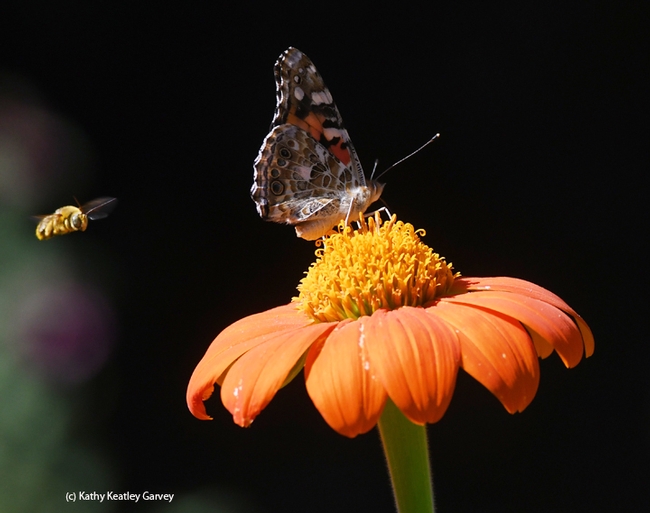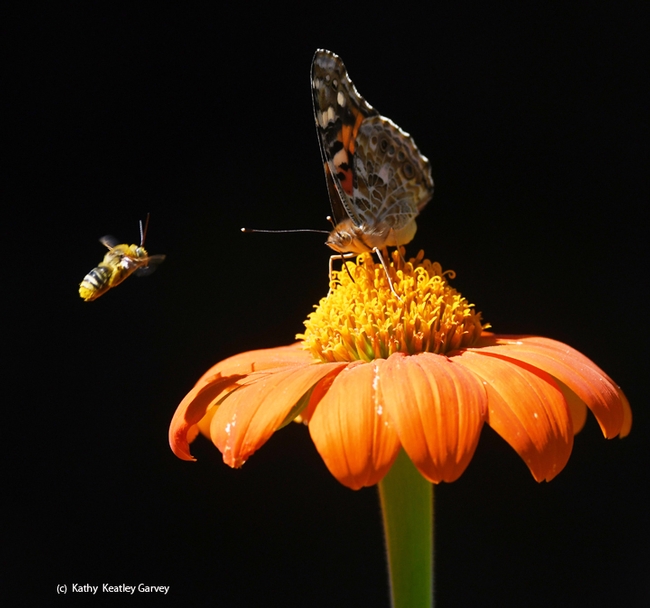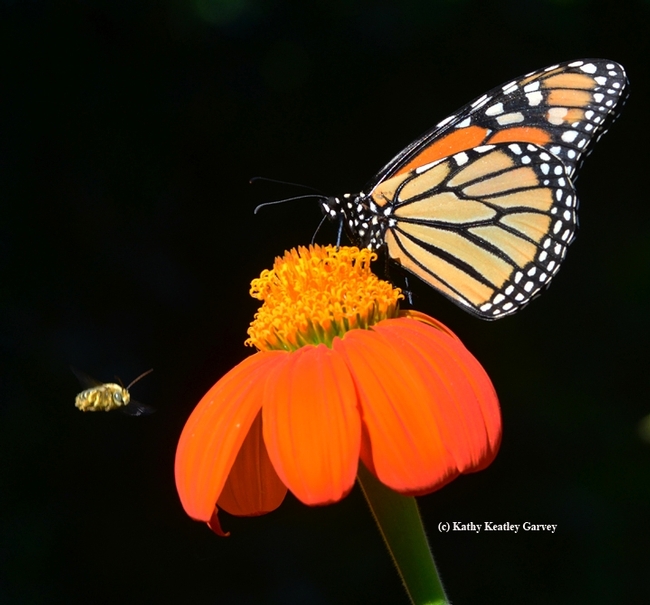What was that!
If you grow Mexican sunflowers (Tithonia) in your pollinator garden, you've probably noticed the fast-flying longhorned male bees being totally territorial.
Their job is to target whatever's on the Tithonia. It doesn't matter if it's a bumble bee, a honey bee, or a butterfly--it's fair game.
As the late Robbin Thorp (1933-2019), a global expert on bees and a distinguished emeritus professor of entomology at the University of California, Davis, used to say about the male longhorned bees, Melissodes agilis: "They're trying to save the flowers for their own species, per chance to mate with them."
Watching the territorial behavior is jaw-dropping, but imagine if you're a butterfly trying to sip a little nectar.
"Oh no! What was that heading straight at me?"
"Horrors! Here he comes again! Can't a pollinator get a little peace around here?"
The longhorned bee, Melissodes agilis, is just one of the more than 1600 species of bees found in California. If you want to learn more about them, be sure to read California Bees and Blooms: A Guide for Gardeners and Naturalists (Heyday, 2014), co-authored by scientists from UC Berkeley and UC Davis.
"California Bees and Blooms (co-authored by Gordon Frankie, Robbin Thorp, Barbara Ertter and Rollin Coville) holds a magnifying glass up to the twenty-two most common genera (and six species of cuckoo bees), describing each one's distinctive behaviors, social structures, flight season, preferred flowers, and enemies," according to Heyday.
That it does. And if you try to stop the action with your camera, it helps to set the shutter speed at 1/3000 to 1/4000 of a second. (The two images of the bee and painted lady butterfly captured with a Nikon D500 camera, mounted with a 70-180 mm macro zoom lens, with the aperture set at 5.6 and ISO at 800. Image of the bee and monarch taken with a Nikon D800 mounted with a 105mm lens, and with similar settings.)
Attached Images:

A male longhorned bee, Melissodes agilis, targets the back of a painted lady, Vanessa cardui, on a Mexican sunflower in a Vacaville pollinator garden. This is typical territorial behavior. (Photo by Kathy Keatley Garvey)

Heads up! A male longhorned bee, Melissodes agilis, heads straight for the painted lady butterfly, Vanessa cardui. (Photo by Kathy Keatley Garvey)

A monarch butterfly is interrupted by a male longhorned bee engaging in territorial behavior. (Photo by Kathy Keatley Garvey)